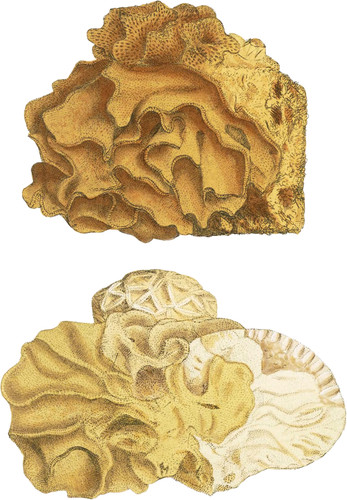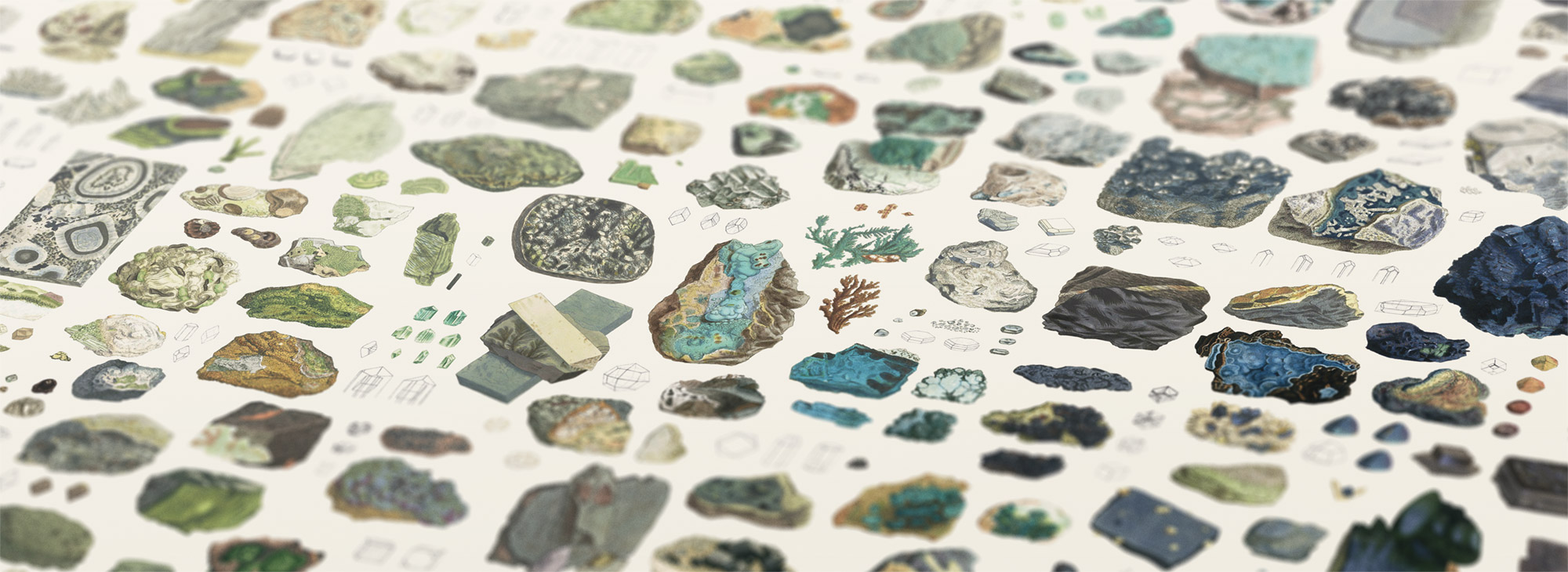 Enlarge
Enlarge
British Mineralogy
Coralliform Carbonate of Lime
- Div. 2. Imitative.
- Var. The remains of Corallines, &c.
This mineralized matter, well known in many parts of Suffolk by the name Crag, and scarcely known elsewhere, is found in various parts of the S. E. of Suffolk; as at Aldborough , Orford, and Ipswich. One or two spots in Norfolk may perhaps be included as somewhat similar; but while they agree in some particulars, they differ in others relating to the variety of animal remains. The fragments of corals, shells, &c. are so coloured by means of an ochraceous Iron, as to look like gravel at a distance: the Iron also serves, in union with some Lime, to cement them together into a continuous stratum, which, in some places, is readily friable, in others more compact; often tenor twenty feet thick, in larger or smaller beds. It is remarkable for having vertical inverted conical holes about two feet in diameter, and more or less gradually tapering to the bottom of the Crag; and these are often filled with common mould, bits of roots, &c., apparently from the surface.
The Crag is merely masses of shells and shelly remains, with Zoophytes, &c.; some wonderfully well preserved: the whole partakes in general of a ferruginous tint.
I herewith give a figure of pieces which have preserved some of the tendered of the Madrepores: the nicety of the line work is not to be passed over without admiration. The upper part of the upper figure is much like the recent Lace Coral or Millepora foraminosa, Solander and Ellis, t.26. It however seems somewhat different; and I believe there are two or three species: the remainder of the figure is an undescribcd Eschara, with a Balanus attached to it. This is what some have distinguished as loose Crag from Aldborough; and, when dug, it adheres in lumps easily cut with a spade, and er Limbics in pieces. The lower figure has a sort of Millepora, of which I do not know any recent analogue. The Eschara seems to be the same as the one above; it appears to have a double row of cells, which lie in quincunx order, and are convex, somewhat oval or broken. There is also a Sertularia; a spreading Flustra or two, one rowr of cells at the broken edges of which will help to distinguish them: they are of very fine texture, and exquisite structure: they are also in folds or wrinkles over the inside of a Pecten, which is very common in Crag.
These pits afford a great variety of shells and other marine subjects, enough to stock a cabinet, and as perfect as if fresh; and although in general quite ochraceous outside, some are nearly white. These are all preserved in the Crag, which is chiefly broken shells, with some Quartz sand? much more perfectly than if they had been preserved in bran, which the Crag very aptly resembles in colour; varying, however, in being of a darker or lighter ochraceous tint. It is chiefly Carbonate of Lime and Oxide of Iron, and is considered excellent manure in the place where it abounds. The compact kind is used near Orford for building walls, &c., being easily cut into blocks containing about two cube feet each.

